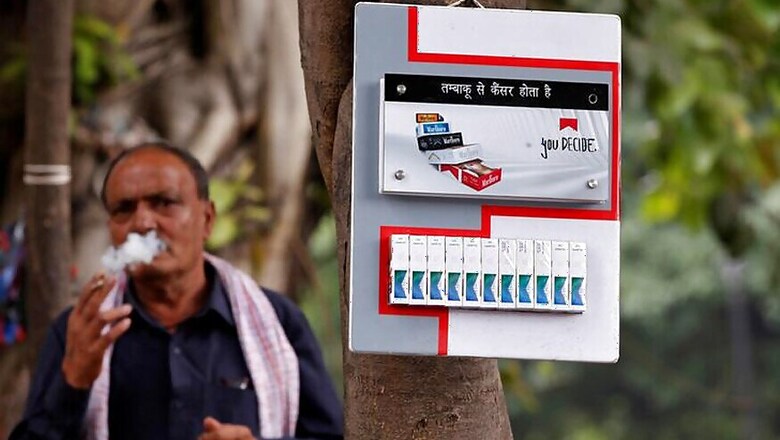
views
New Delhi: Does smoking cause throat cancer? Does tobacco cause mouth cancer?
On Monday, when the Supreme Court takes up the issue of pictorial warnings on cigarette packs and tobacco products, it would also scrutinise whether the textual warning about cancer should be printed or not.
With the central government failing to provide any empirical evidence, the Karnataka High Court has ruled that such textual warnings need not be printed on cigarette packets and on other tobacco products.
Not just this, the alarming images of persons suffering from throat and mouth cancer will also have to go, said the division bench of the high court.
The Cigarette and Other Tobacco Products (Packaging and Labelling) Amendment Rules, 2014 made it mandatory for tobacco manufacturers, sellers and advertisers to have textual warning coupled with images on the packets.
In case of the smoking forms of tobacco, the textual warning was: “Smoking causes throat cancer” and for smokeless forms of tobacco products, the warning was: “Tobacco causes mouth cancer”. The pictures had to purportedly show the effects of cigarettes on the throat and that of chewing tobacco in the mouth leading to cancer.
In the high court, tobacco manufacturers questioned why they should be compelled to print such textual warnings along with horrid images when the co-relation between their product and the diseases has not been established. They called it a violation of their right to carry on trade and commerce apart from impinging upon their rights to advertise.
The HC noted that it did not have to give an opinion about the effect of smoking or chewing tobacco in this batch of cases since that was the domain of medical experts. The court said it was concerned only about the validity of the mandate on printing textual warnings and the images.
Referring to a debate yet to be settled about the ill-effects of smoking and tobacco, the court said that the regulation will have to be quashed for the want of realistic proof.
“There has been no medical or scientific data or empirical research conducted and data collated with regard to impact of the warnings on package of tobacco and its products on users/consumers or potential users or consumers, which has been placed before this Court by having inputs from behavioural scientists,” underscored the bench.
It stated that the government has failed in establishing that the impugned pictorial and textual warnings were in consonance with medical research and therefore, they could not be construed as a form of reasonable restriction on manufacturers’ rights to trade and to advertise.
“In the circumstances, it is held that the content of the specified health warning is arbitrary and it is an unreasonable restriction… as they have been arbitrarily selected. Hence, clause (2) of the Schedule to Amendment Rules, 2014 is liable to be quashed and is quashed,” held the bench.
The court pointed out that the textual warnings cannot be accepted as true in the face of a serious debate over it, the world over. “The pictorial images also would have to be held to be impermissible for the very same reason. This is because there is no universal acceptance of the theory that use or consumption of tobacco and its products causes cancer,” said the bench of Justices BS Patil and BV Nagarathna.
It added that the HC would not venture to give its verdict on that aspect of the matter one way or the other “but when there is no unanimity on the statements contained in the textual warnings, rather when the same is a subject of serious debate the world over, the Amendment Rules, 2014 could not have incorporated the same without there being any rationale behind it.”
It also emphasised that there appeared no real application of mind on the selection of contents of the warnings, which are graphic images and are seeking to exaggerate the ill-effects of tobacco and its products so as to co-relate them to the textual warnings.
“In fact, the warnings may not even serve the purpose for which they are meant as the consumers or potential consumers of tobacco and its products may refuse to believe in the contents of such textual warnings and consequently, the pictorial warnings also would not have any impact on anybody. As a result, the whole object and purpose of having such warnings would be lost,” it added.
The HC ruling has been appealed against in the Supreme Court, which is scheduled to examine it on January 8.




















Comments
0 comment